Unit 2 Exploring English Starting out 课件(共46张PPT)-2025-2026学年外研版(2019)必修第一册
文档属性
| 名称 | Unit 2 Exploring English Starting out 课件(共46张PPT)-2025-2026学年外研版(2019)必修第一册 | 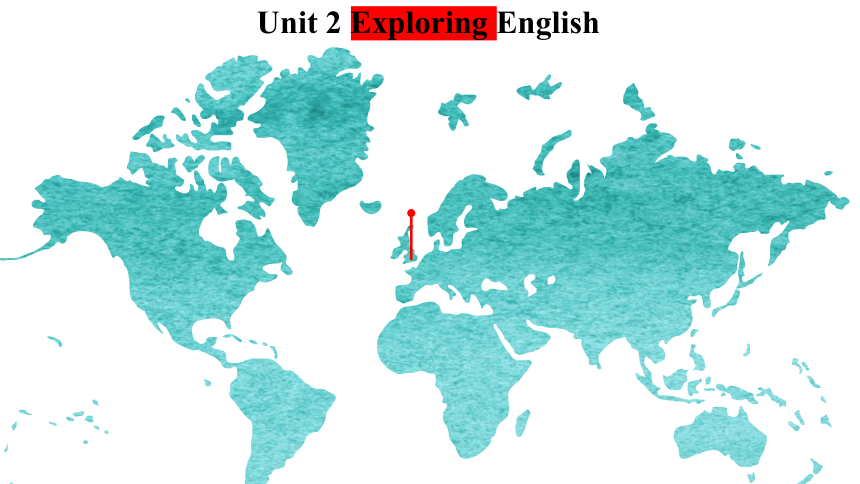 | |
| 格式 | pptx | ||
| 文件大小 | 44.8MB | ||
| 资源类型 | 教案 | ||
| 版本资源 | 外研版(2019) | ||
| 科目 | 英语 | ||
| 更新时间 | 2025-07-17 10:09:51 | ||
图片预览

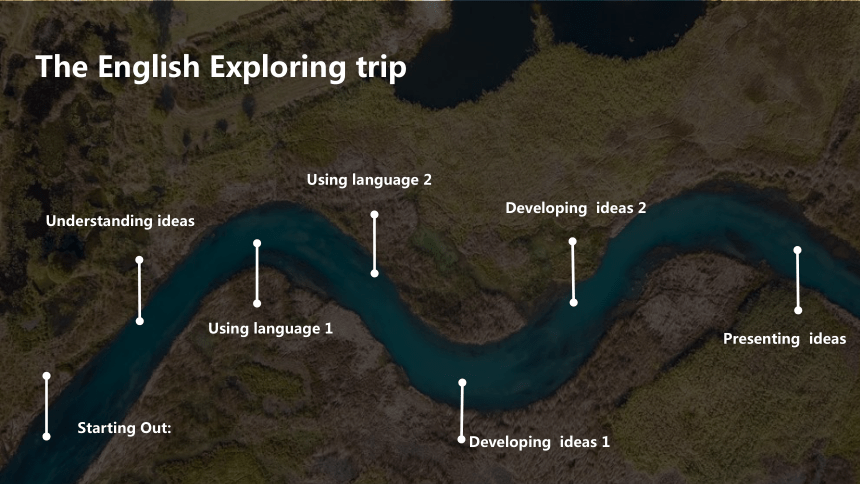
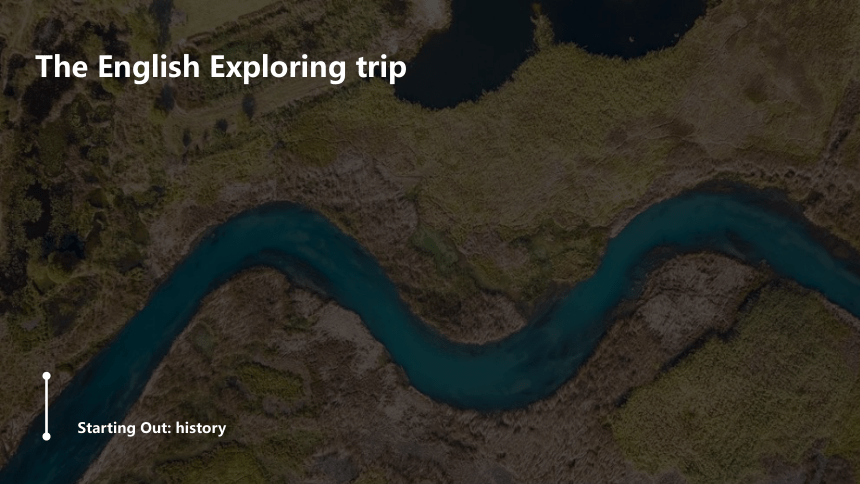
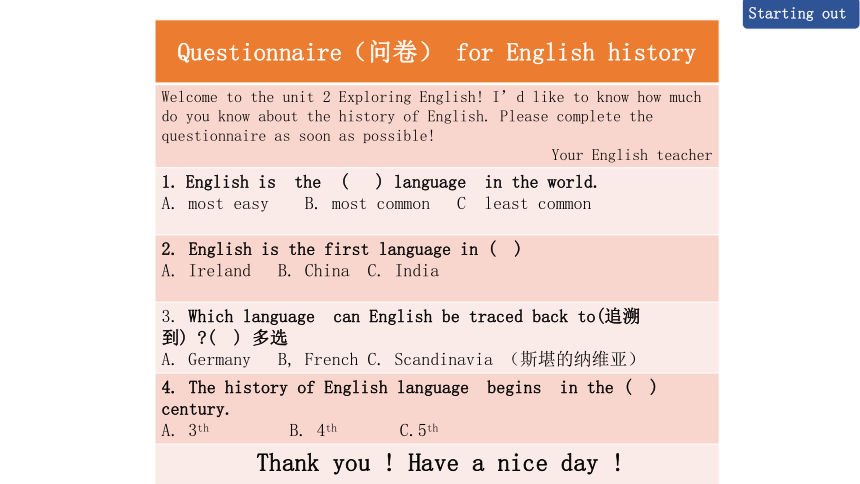
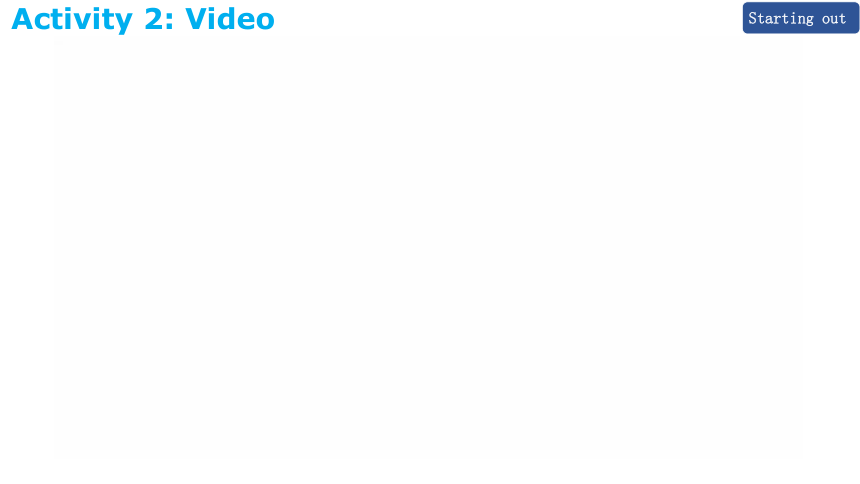
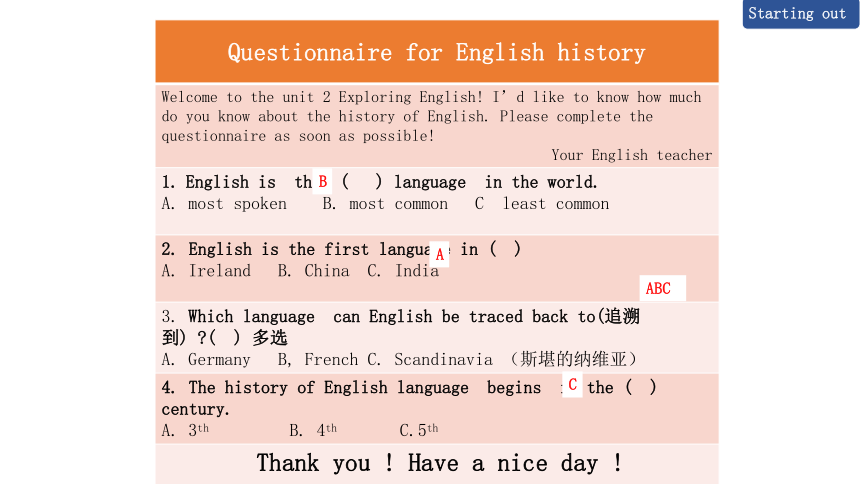
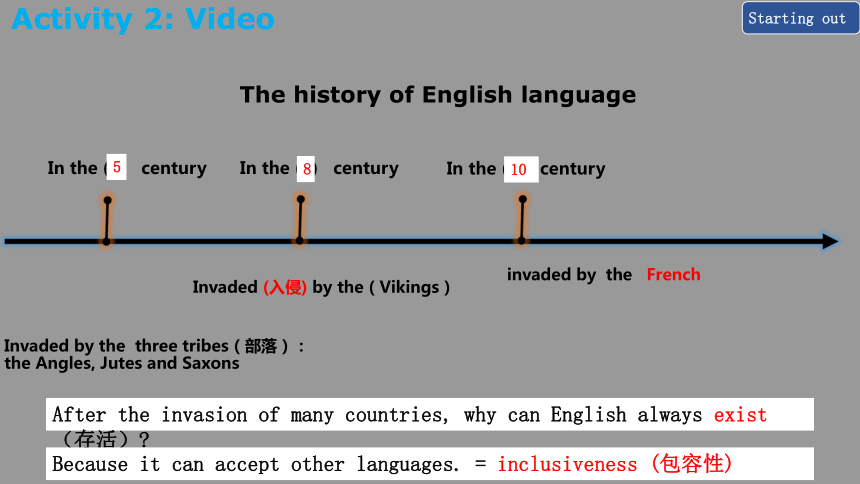
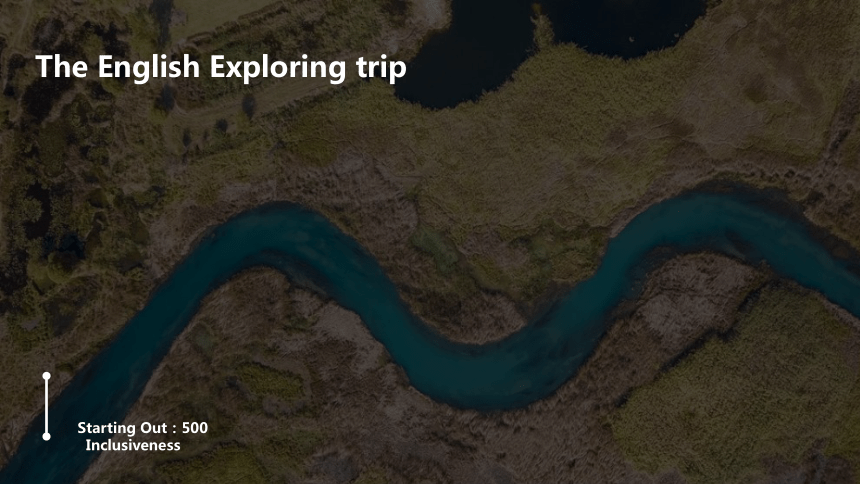
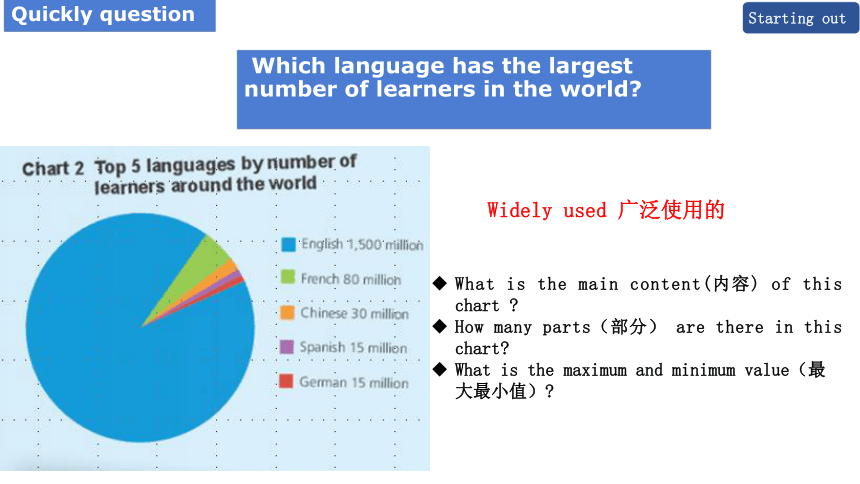
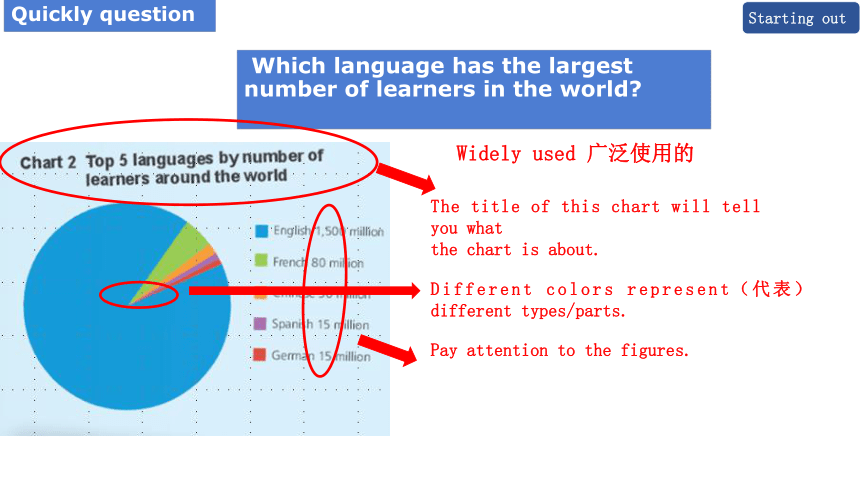
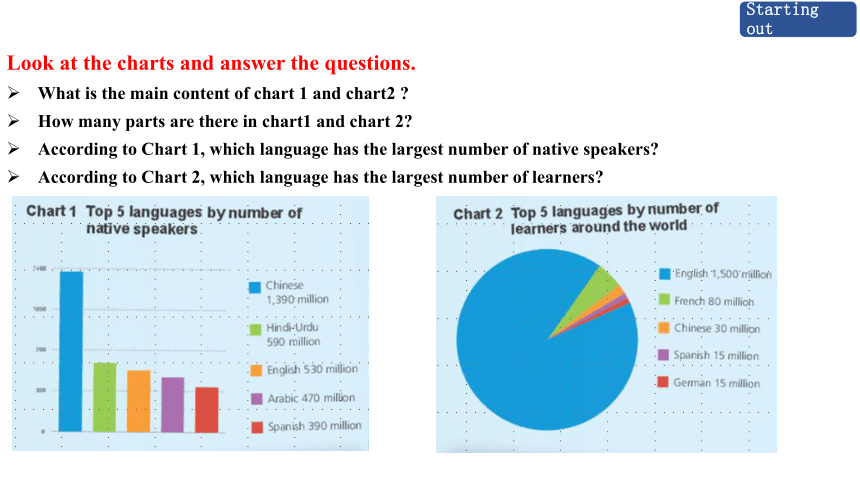
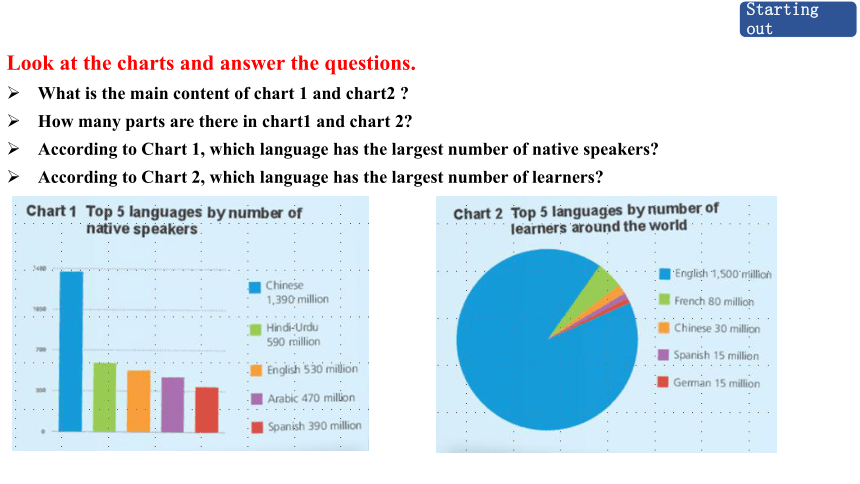
文档简介
(共46张PPT)
Unit 2 Exploring English
The English Exploring trip
Starting Out:
Understanding ideas
Using language 1
Using language 2
Developing ideas 1
Developing ideas 2
Presenting ideas
The English Exploring trip
Starting Out: history
Questionnaire(问卷) for English history
Welcome to the unit 2 Exploring English! I’d like to know how much do you know about the history of English. Please complete the questionnaire as soon as possible!
Your English teacher
English is the ( ) language in the world.
A. most easy B. most common C least common
2. English is the first language in ( )
A. Ireland B. China C. India
3. Which language can English be traced back to(追溯到) ( ) 多选
A. Germany B, French C. Scandinavia (斯堪的纳维亚)
4. The history of English language begins in the ( ) century.
A. 3th B. 4th C.5th
Thank you ! Have a nice day !
Activity 2: Video
Questionnaire for English history
Welcome to the unit 2 Exploring English! I’d like to know how much do you know about the history of English. Please complete the questionnaire as soon as possible!
Your English teacher
English is the ( ) language in the world.
A. most spoken B. most common C least common
2. English is the first language in ( )
A. Ireland B. China C. India
3. Which language can English be traced back to(追溯到) ( ) 多选
A. Germany B, French C. Scandinavia (斯堪的纳维亚)
4. The history of English language begins in the ( ) century.
A. 3th B. 4th C.5th
Thank you ! Have a nice day !
B
A
ABC
C
Activity 2: Video
The history of English language
In the ( ) century
In the ( ) century
In the ( ) century
Invaded by the three tribes(部落): the Angles, Jutes and Saxons
Invaded (入侵) by the ( Vikings )
invaded by the French
5
8
10
After the invasion of many countries, why can English always exist (存活)
Because it can accept other languages. = inclusiveness (包容性)
The English Exploring trip
Starting Out:500
Inclusiveness
Which language has the largest number of learners in the world
Quickly question
What is the main content(内容) of this chart
How many parts(部分) are there in this chart
What is the maximum and minimum value(最大最小值)
Widely used 广泛使用的
Which language has the largest number of learners in the world
Quickly question
The title of this chart will tell you what
the chart is about.
Widely used 广泛使用的
Different colors represent(代表) different types/parts.
Pay attention to the figures.
Look at the charts and answer the questions.
What is the main content of chart 1 and chart2
How many parts are there in chart1 and chart 2
According to Chart 1, which language has the largest number of native speakers
According to Chart 2, which language has the largest number of learners
Starting out
Look at the charts and answer the questions.
What is the main content of chart 1 and chart2
How many parts are there in chart1 and chart 2
According to Chart 1, which language has the largest number of native speakers
According to Chart 2, which language has the largest number of learners
Starting out
The English Exploring trip
Starting Out: In 500
Inclusiveness
Widely-use
Look at the charts and answer the questions.
3.What can you learn from Chart 3
The number of English learners in China is increasing.
Starting out
Predict (预测) the number of Mandarin learners in the future ?
Why an increasing number of foreigners start to learn mandarin
Understanding ideas
Inclusiveness
Widely-use
Do they have the same problem in learning Chinese
understanding a word from its formation.
(只了解字面意思)
Understanding ideas
Inclusiveness
Widely-use
Do you have the same problems in learning English
Understanding ideas
Inclusiveness
Widely-use
Butterfly
Mooncake
Pineapple
Do you know when pineapple was discovered(发现)
It was a fruit discovered by Columbus in 1493.
The English Exploring trip
Starting Out: in 500 years
Inclusiveness
Widely-use
Understanding ideas: In 1493 years
□ food
□ cooking
□ words
□ plants
□ fruit
Understanding ideas
Fast reading
Read the passage quickly and find the main idea. (主旨大意)
Tips for reading:
Pay attention to the first or last sentence of first or last paragraph.
English is a crazy and creative language.
The author's opinion
Learn to understand the passage.
1
Topic/
The author’s opinion
Choose the author’s purpose in writing the passage.
1 To tell us that English is very difficult to learn.
2 To give advice on how to learn English.
3 To show that English is interesting and creative.
4 To explain how English was created.
Understanding ideas
Complete the notes with words from the passage.
Careful reading
Understanding ideas
Understanding ideas
In order to support his ideas, the author uses many examples that show the _______ madness of English.
unique
Careful reading
Understanding ideas
egg
hamburger
pine
apple
pineapple
夫妻肺片
鱼香肉丝
老婆饼
东坡肉
Chinese is also
interesting and creative
We can’t always understand a compound word(复合词) by adding the meanings of the words it is made up of!
sculpture
painting
seasick
airsick
carsick
homesick
The same rules doesn’t always apply to everything!
rules
rules
opposing
behaviors
snowing
sunshine
Different words or phrases may have the same meaning!
fill out
invisible
ends
The same words and phrases may have different meanings in different contexts.
Different words or phrases may have the same meaning!
madness
The same rules doesn’t always apply to everything!
Different words or phrases may have the same meaning!
We can’t always understand a compound word by adding the meanings of the words it is made up of!
The same words and phrases may have different meanings in different contexts.
madness
How many parts can this passage be divided into(划分)
Neither Pine nor Apple in Pineapple
Part 1(Para.1)
Part 2(Para.2-6)
Part 3(Para.7)
The topic of the passage.
Give some examples to discuss the topic.
Conclusion.
English is a crazy language to learn
Para2:English usage(常用语)
Para3:Suffix(词缀)
Para4:Parts of speech(词性)
Para5 :abbreviation(缩略词)
Para6: set phrases (固定搭配)
The invention of
English reflects human’s creativity .
the structure of the passage
Introduce the topic
List some examples to support topic
Draw a conclusion
The author's opinion
Topic
作者提出观点
例子支撑-论据
作者总结,重申观点
Do you agree with authors’ opinion about the English language Give your reason
Understanding ideas
Role play: reading for speaking
Understanding ideas
You were nearly arrested(逮捕) at the airport. Just because you were greeting your pen-friend Jack! All that(这一切) your said was “Hi! Jack,” but very loud.
如果你是jack 你要帮助你的朋友向警官解释这个误解?
You finally got out of the airport with your friends.
After that, Jack told me: hijack means robbery.
Reading for speaking
The English Exploring trip
Starting Out: in 500 years
Inclusiveness
Widely used
Understanding ideas: in 1493 years Crazy – interesting
Creative
Understanding ideas
Language points
have trouble/difficulty(in)doing sth.
做某事有困难
have no trouble/difficulty(in)doing sth.
毫不费力地做某事
have trouble/difficulty with sth.
在……方面有困难 / 麻烦
I have trouble with pronunciation.
我在发音上有困难。
2.Not…until :“到……时候为止”、“到……时候才”或“在……时候以前不
You mustn’t eat anything until you see the doctor.
看过医生之后,你才能吃东西。
I did not watch TV until she came back.
直到她回来我才开始看电视。
2.
neither表示“两者都不…”,+单数谓语动词;
either表示“两者之一”,+单数谓语动词。
either or表示二者择一,译为:要么…要么…、或者……或者;
She likes neither butter nor cheese.(连接名词)
Neither he nor she is at home today. (接两个主语时,也应遵循"就近原则".)
neither nor表示否定两部,译为:既不是…也不是…。
Either Mary or Rose is coming .
不是玛丽来,就是罗斯来.
For example -for instance 比如说,举例
On the train/bus 在车上
At sea 在海上
Get back home 回家
Speaking of xxx 说到 谈到
1.While 作连词:表示“而,然而”,指前后意义的对比和转折。
Some people waste food while others haven't enough.有些人浪费粮食,然而有些人却吃不饱
2.表示某个动作正在进行的同时,另一动作也在进行之中, 有对同类的两个动作进行对比的意味.
While I was playing the piano, she was dancing.
我在弹钢琴,她在跳舞.
Oppose v. 反对;与……角逐
Oppose doing sth. 反对做某事
Opposite 对面的;完全不同的;
Be opposite to 与什么相反
Behave-behavior
good/bad behavior 良好 / 恶劣行为
Behave well 表现好
Behave oneself 举止得体 ; 得体
Well-behaved 表现良好
Badly-behaved表现不好的
Players must behave well on court.
比赛者应该遵守场上规则。
look out of
往外看;望出去;看窗外
Confuse-confusing-confused-confusion
Confuse …with 混淆…
Be confused about 对..感到困惑
They argued with each other,because they confused quantity with quality.
他们争论着,因为他们把数量与质量混淆了。
Wonder at 对..感到吃惊
Unique-uniquely
Be unique to 对…来说是独一无二的
The culture is unique to this country.
Burn up /down: 烧毁
Fill in/ out: 填表
Goes off: 响了/走了
Be invented by 被...发明
Create-creation –creator-creature-creativity-creative
1.That/This/It is why + 结果 那 / 这就是为什么……
Tom was caught in traffic. That’s why he was late for work this morning.
汤姆遇到了堵车,那就是他今天早上上班迟到的原因。
2.That/This/It is because + 原因 那 / 这是因为……
Tom was late for work this morning. That was because he was caught in traffic.
今天早上汤姆上班迟到了,那是因为他遇上了堵车。
Language points
Para 1:
Introduction
Para2-6:
Examples
Para 7:
Conclusion
1) 做某事有困难 2) 直到….才
3) 要么…要么,或者…或者 4) 既不是.也不是
5) 举例 6) 在公交车上
7) 在海上 8) 回家
9) 说到.谈到 10) 然而.而
11) 反对 12) 表现良好
13) 看窗外 14) 填表
15) 对…感到困惑 16) 感到吃惊
17)_______________ 对…独一无二 18)____________________烧毁
19)_______________被发明 20)_______________上发条.结束
Have trouble in doing sth
Not … until
Either…or
neither nor
For example
On the bus
At sea
Get back home
Speaking of
while
oppose
Behave well
Look out of
Fill in /out
Be confused about
Wonder at
Be unique to
Be invented by
Wind up
21)_______________这就为什么/因为
This is why /because
Burn up/down
THE END
Unit 2 Exploring English
The English Exploring trip
Starting Out:
Understanding ideas
Using language 1
Using language 2
Developing ideas 1
Developing ideas 2
Presenting ideas
The English Exploring trip
Starting Out: history
Questionnaire(问卷) for English history
Welcome to the unit 2 Exploring English! I’d like to know how much do you know about the history of English. Please complete the questionnaire as soon as possible!
Your English teacher
English is the ( ) language in the world.
A. most easy B. most common C least common
2. English is the first language in ( )
A. Ireland B. China C. India
3. Which language can English be traced back to(追溯到) ( ) 多选
A. Germany B, French C. Scandinavia (斯堪的纳维亚)
4. The history of English language begins in the ( ) century.
A. 3th B. 4th C.5th
Thank you ! Have a nice day !
Activity 2: Video
Questionnaire for English history
Welcome to the unit 2 Exploring English! I’d like to know how much do you know about the history of English. Please complete the questionnaire as soon as possible!
Your English teacher
English is the ( ) language in the world.
A. most spoken B. most common C least common
2. English is the first language in ( )
A. Ireland B. China C. India
3. Which language can English be traced back to(追溯到) ( ) 多选
A. Germany B, French C. Scandinavia (斯堪的纳维亚)
4. The history of English language begins in the ( ) century.
A. 3th B. 4th C.5th
Thank you ! Have a nice day !
B
A
ABC
C
Activity 2: Video
The history of English language
In the ( ) century
In the ( ) century
In the ( ) century
Invaded by the three tribes(部落): the Angles, Jutes and Saxons
Invaded (入侵) by the ( Vikings )
invaded by the French
5
8
10
After the invasion of many countries, why can English always exist (存活)
Because it can accept other languages. = inclusiveness (包容性)
The English Exploring trip
Starting Out:500
Inclusiveness
Which language has the largest number of learners in the world
Quickly question
What is the main content(内容) of this chart
How many parts(部分) are there in this chart
What is the maximum and minimum value(最大最小值)
Widely used 广泛使用的
Which language has the largest number of learners in the world
Quickly question
The title of this chart will tell you what
the chart is about.
Widely used 广泛使用的
Different colors represent(代表) different types/parts.
Pay attention to the figures.
Look at the charts and answer the questions.
What is the main content of chart 1 and chart2
How many parts are there in chart1 and chart 2
According to Chart 1, which language has the largest number of native speakers
According to Chart 2, which language has the largest number of learners
Starting out
Look at the charts and answer the questions.
What is the main content of chart 1 and chart2
How many parts are there in chart1 and chart 2
According to Chart 1, which language has the largest number of native speakers
According to Chart 2, which language has the largest number of learners
Starting out
The English Exploring trip
Starting Out: In 500
Inclusiveness
Widely-use
Look at the charts and answer the questions.
3.What can you learn from Chart 3
The number of English learners in China is increasing.
Starting out
Predict (预测) the number of Mandarin learners in the future ?
Why an increasing number of foreigners start to learn mandarin
Understanding ideas
Inclusiveness
Widely-use
Do they have the same problem in learning Chinese
understanding a word from its formation.
(只了解字面意思)
Understanding ideas
Inclusiveness
Widely-use
Do you have the same problems in learning English
Understanding ideas
Inclusiveness
Widely-use
Butterfly
Mooncake
Pineapple
Do you know when pineapple was discovered(发现)
It was a fruit discovered by Columbus in 1493.
The English Exploring trip
Starting Out: in 500 years
Inclusiveness
Widely-use
Understanding ideas: In 1493 years
□ food
□ cooking
□ words
□ plants
□ fruit
Understanding ideas
Fast reading
Read the passage quickly and find the main idea. (主旨大意)
Tips for reading:
Pay attention to the first or last sentence of first or last paragraph.
English is a crazy and creative language.
The author's opinion
Learn to understand the passage.
1
Topic/
The author’s opinion
Choose the author’s purpose in writing the passage.
1 To tell us that English is very difficult to learn.
2 To give advice on how to learn English.
3 To show that English is interesting and creative.
4 To explain how English was created.
Understanding ideas
Complete the notes with words from the passage.
Careful reading
Understanding ideas
Understanding ideas
In order to support his ideas, the author uses many examples that show the _______ madness of English.
unique
Careful reading
Understanding ideas
egg
hamburger
pine
apple
pineapple
夫妻肺片
鱼香肉丝
老婆饼
东坡肉
Chinese is also
interesting and creative
We can’t always understand a compound word(复合词) by adding the meanings of the words it is made up of!
sculpture
painting
seasick
airsick
carsick
homesick
The same rules doesn’t always apply to everything!
rules
rules
opposing
behaviors
snowing
sunshine
Different words or phrases may have the same meaning!
fill out
invisible
ends
The same words and phrases may have different meanings in different contexts.
Different words or phrases may have the same meaning!
madness
The same rules doesn’t always apply to everything!
Different words or phrases may have the same meaning!
We can’t always understand a compound word by adding the meanings of the words it is made up of!
The same words and phrases may have different meanings in different contexts.
madness
How many parts can this passage be divided into(划分)
Neither Pine nor Apple in Pineapple
Part 1(Para.1)
Part 2(Para.2-6)
Part 3(Para.7)
The topic of the passage.
Give some examples to discuss the topic.
Conclusion.
English is a crazy language to learn
Para2:English usage(常用语)
Para3:Suffix(词缀)
Para4:Parts of speech(词性)
Para5 :abbreviation(缩略词)
Para6: set phrases (固定搭配)
The invention of
English reflects human’s creativity .
the structure of the passage
Introduce the topic
List some examples to support topic
Draw a conclusion
The author's opinion
Topic
作者提出观点
例子支撑-论据
作者总结,重申观点
Do you agree with authors’ opinion about the English language Give your reason
Understanding ideas
Role play: reading for speaking
Understanding ideas
You were nearly arrested(逮捕) at the airport. Just because you were greeting your pen-friend Jack! All that(这一切) your said was “Hi! Jack,” but very loud.
如果你是jack 你要帮助你的朋友向警官解释这个误解?
You finally got out of the airport with your friends.
After that, Jack told me: hijack means robbery.
Reading for speaking
The English Exploring trip
Starting Out: in 500 years
Inclusiveness
Widely used
Understanding ideas: in 1493 years Crazy – interesting
Creative
Understanding ideas
Language points
have trouble/difficulty(in)doing sth.
做某事有困难
have no trouble/difficulty(in)doing sth.
毫不费力地做某事
have trouble/difficulty with sth.
在……方面有困难 / 麻烦
I have trouble with pronunciation.
我在发音上有困难。
2.Not…until :“到……时候为止”、“到……时候才”或“在……时候以前不
You mustn’t eat anything until you see the doctor.
看过医生之后,你才能吃东西。
I did not watch TV until she came back.
直到她回来我才开始看电视。
2.
neither表示“两者都不…”,+单数谓语动词;
either表示“两者之一”,+单数谓语动词。
either or表示二者择一,译为:要么…要么…、或者……或者;
She likes neither butter nor cheese.(连接名词)
Neither he nor she is at home today. (接两个主语时,也应遵循"就近原则".)
neither nor表示否定两部,译为:既不是…也不是…。
Either Mary or Rose is coming .
不是玛丽来,就是罗斯来.
For example -for instance 比如说,举例
On the train/bus 在车上
At sea 在海上
Get back home 回家
Speaking of xxx 说到 谈到
1.While 作连词:表示“而,然而”,指前后意义的对比和转折。
Some people waste food while others haven't enough.有些人浪费粮食,然而有些人却吃不饱
2.表示某个动作正在进行的同时,另一动作也在进行之中, 有对同类的两个动作进行对比的意味.
While I was playing the piano, she was dancing.
我在弹钢琴,她在跳舞.
Oppose v. 反对;与……角逐
Oppose doing sth. 反对做某事
Opposite 对面的;完全不同的;
Be opposite to 与什么相反
Behave-behavior
good/bad behavior 良好 / 恶劣行为
Behave well 表现好
Behave oneself 举止得体 ; 得体
Well-behaved 表现良好
Badly-behaved表现不好的
Players must behave well on court.
比赛者应该遵守场上规则。
look out of
往外看;望出去;看窗外
Confuse-confusing-confused-confusion
Confuse …with 混淆…
Be confused about 对..感到困惑
They argued with each other,because they confused quantity with quality.
他们争论着,因为他们把数量与质量混淆了。
Wonder at 对..感到吃惊
Unique-uniquely
Be unique to 对…来说是独一无二的
The culture is unique to this country.
Burn up /down: 烧毁
Fill in/ out: 填表
Goes off: 响了/走了
Be invented by 被...发明
Create-creation –creator-creature-creativity-creative
1.That/This/It is why + 结果 那 / 这就是为什么……
Tom was caught in traffic. That’s why he was late for work this morning.
汤姆遇到了堵车,那就是他今天早上上班迟到的原因。
2.That/This/It is because + 原因 那 / 这是因为……
Tom was late for work this morning. That was because he was caught in traffic.
今天早上汤姆上班迟到了,那是因为他遇上了堵车。
Language points
Para 1:
Introduction
Para2-6:
Examples
Para 7:
Conclusion
1) 做某事有困难 2) 直到….才
3) 要么…要么,或者…或者 4) 既不是.也不是
5) 举例 6) 在公交车上
7) 在海上 8) 回家
9) 说到.谈到 10) 然而.而
11) 反对 12) 表现良好
13) 看窗外 14) 填表
15) 对…感到困惑 16) 感到吃惊
17)_______________ 对…独一无二 18)____________________烧毁
19)_______________被发明 20)_______________上发条.结束
Have trouble in doing sth
Not … until
Either…or
neither nor
For example
On the bus
At sea
Get back home
Speaking of
while
oppose
Behave well
Look out of
Fill in /out
Be confused about
Wonder at
Be unique to
Be invented by
Wind up
21)_______________这就为什么/因为
This is why /because
Burn up/down
THE END
